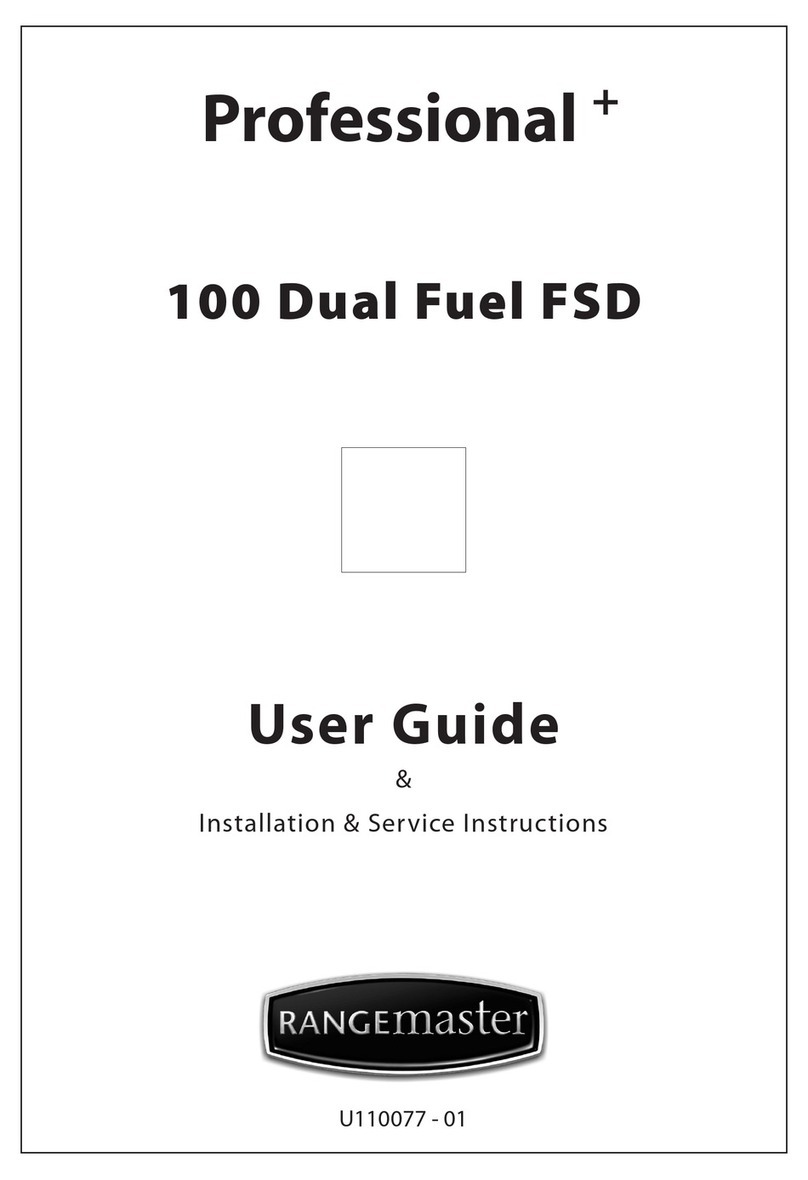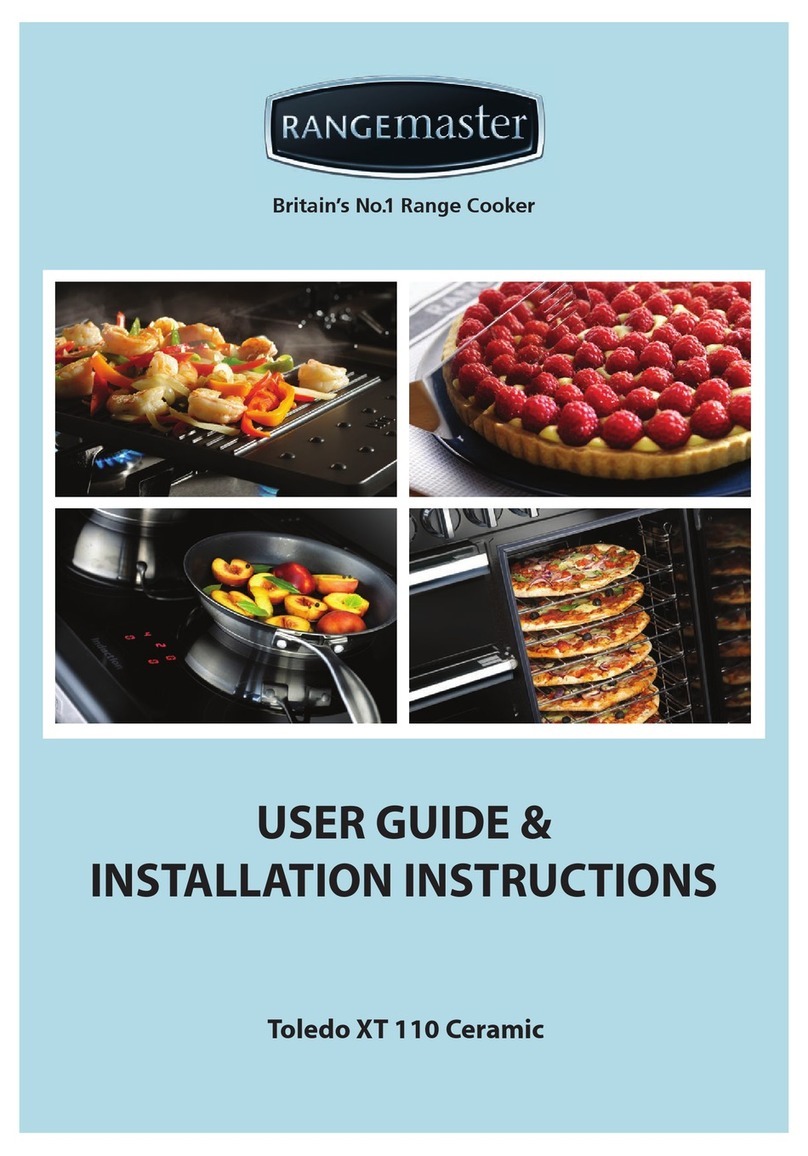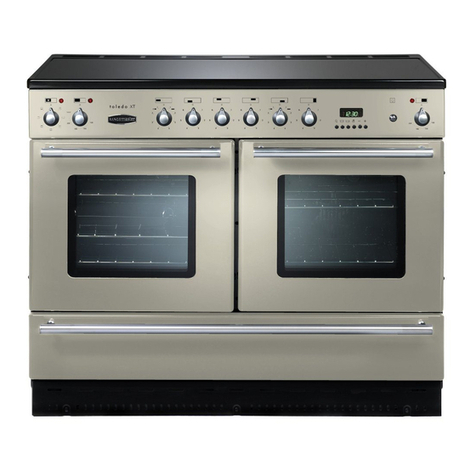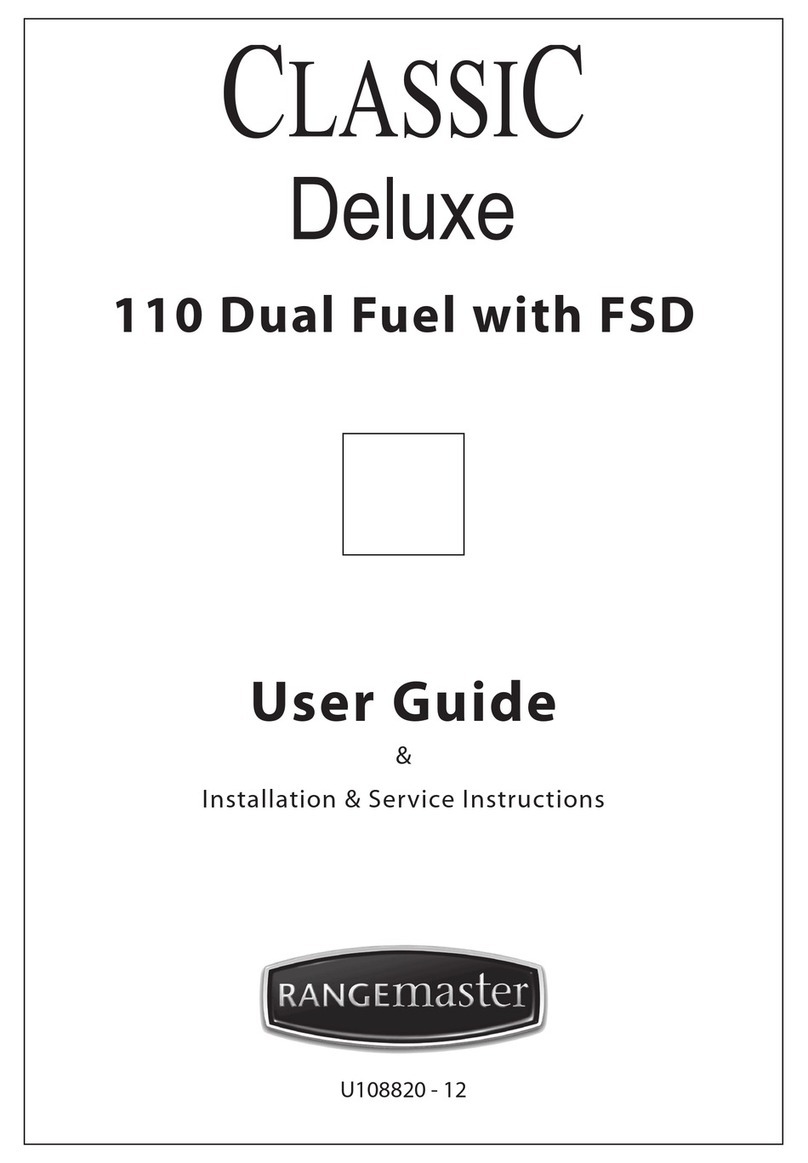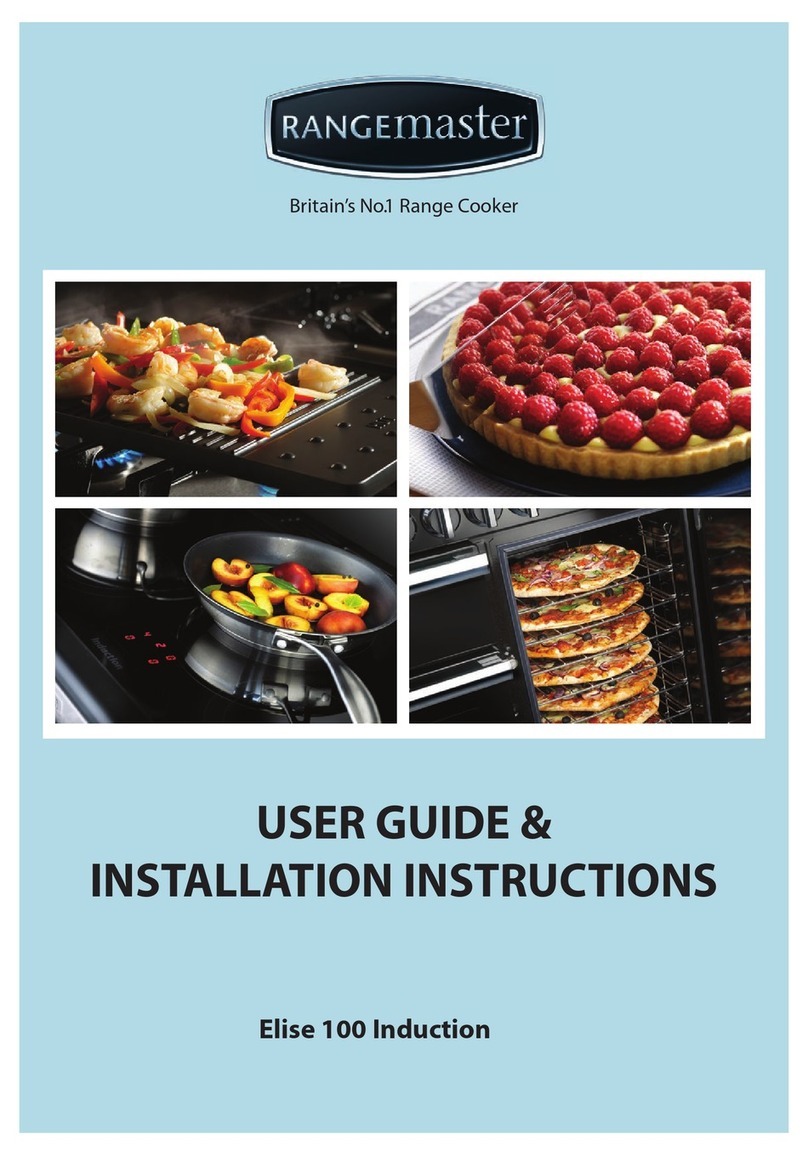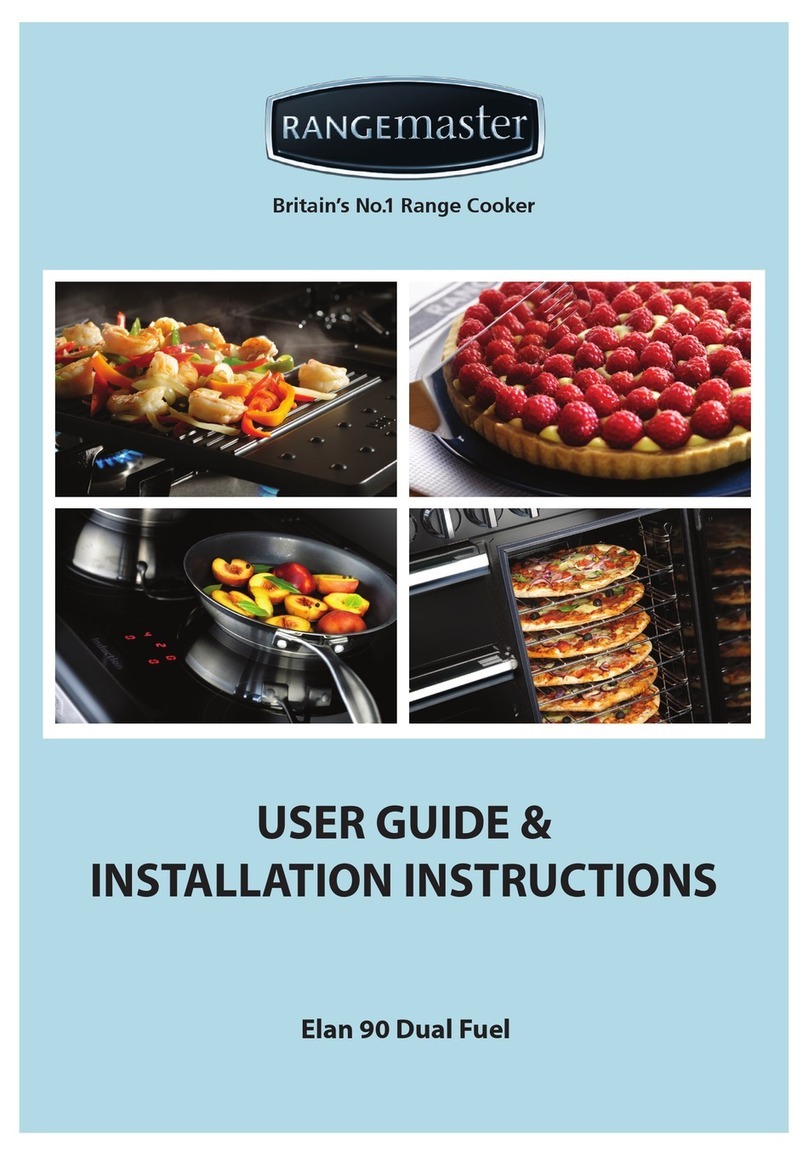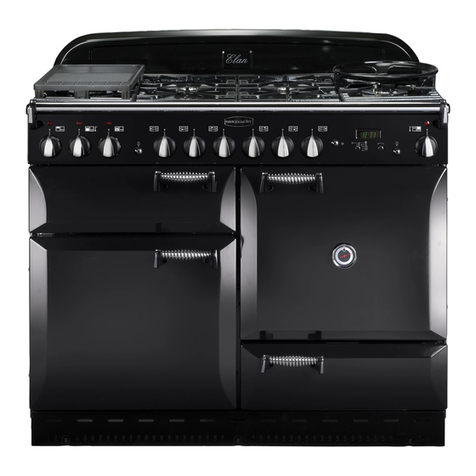1
1. Before You Start...
This User Guide covers a number of dierent models.
Although some of the illustrations will look dierent to
your particular model the functions will be the same. We
hope the meaning is clear.
Your cooker should give you many years of trouble-free
cooking if installed and operated correctly. It is important
that you read this section before you start, particularly if you
have not used a ceramic cooker before.
This appliance is designed for domestic cooking
only. Using it for any other purpose could invalidate
any warranty or liability claim. In particular, the
oven should NOT be used for heating the kitchen –
besides invalidating claims, this wastes fuel and may
overheat the control knobs.
Installation and Maintenance
In the UK the electrical installation should be in accordance
with BS7671. Otherwise, all installations must be in
accordance with the relevant instructions in this booklet, with
the relevant national and local regulations, and with the local
electricity supply companies’requirements.
Make sure that the cooker is wired in and switched on.
Set the clock to make sure that all the ovens are functional –
see the relevant section in this manual.
The cooker should be serviced only by a qualied service
engineer, and only approved spare parts should be used.
Always allow the cooker to cool and then switch it o at the
mains before cleaning or carrying out any maintenance work,
unless specied otherwise in this guide.
Peculiar Smells
When you rst use your cooker it may give o an odour. This
should stop after use.
Before using your cooker for the rst time, make sure that all
packing materials have been removed and then, to dispel
manufacturing odours, turn the ovens to 200°C and run for at
least an hour.
Before using the grill for the rst time you should also turn on
the grill and run for 30 minutes with the grill pan in position,
pushed fully back, and the grill door open.
Make sure the room is well ventilated to the outside air
(see ‘Ventilation’ below). People with respiratory or allergy
problems should vacate the area for this brief period.
Ventilation
The use of a cooking appliance results in the production
of heat and moisture in the room in which it is installed.
Therefore, make sure that the kitchen is well ventilated:
keep natural ventilation holes open or install a powered
cookerhood that vents outside. If you have several hotplates
on, or use the cooker for a long time, open a window or turn
on an extractor fan.
Personal Safety
DO NOT modify this appliance.
This appliance is not intended for use by persons
(including children) with reduced physical, sensory
or mental capabilities, or lack of experience and
knowledge, unless they have been given supervision
or instruction concerning use of the appliance by a
person responsible for their safety.
Children or inrm persons should be supervised to
make sure that they do not play with the appliance.
CAUTION: A long term cooking process has to be
supervised from time to time. A short term cooking
process has to be supervised continuously.
Danger of re: DO NOT store items on the cooking
surfaces.
To avoid overheating, DO NOT install the cooker
behind a decorative door.
Accessible parts will become hot during use and will
retain heat even after you have stopped cooking.
Keep babies and children away from the cooker and
never wear loose–tting or hanging clothes while
the appliance is in use.
DO NOT use a steam cleaner to clean the cooker.
Always be certain that the controls are in the OFF position
when the oven is not in use, and before attempting to clean
the cooker.
Take care when touching the marked cooking areas
of the hob.
When the oven is on, DO NOT leave the oven door
open for longer than necessary – otherwise the
control knobs may become very hot.
Always keep combustible materials, e.g. curtains, and
ammable liquids a safe distance away from your cooker.
DO NOT spray aerosols in the vicinity of the cooker
while it is on.
Use dry oven gloves when applicable – using damp gloves
might result in steam burns when you touch a hot surface.
Do not use a towel or other bulky cloth in place of a glove – it
might catch re if brought into contact with a hot surface.
NEVER operate the cooker with wet hands.
DO NOT use aluminium foil to cover shelves, linings
or the oven roof.
NEVER heat unopened food containers. Pressure
build up may make the containers burst and cause
injury.
DO NOT use unstable saucepans. Always make sure
that you position the handles away from the edge of
the hotplate.


